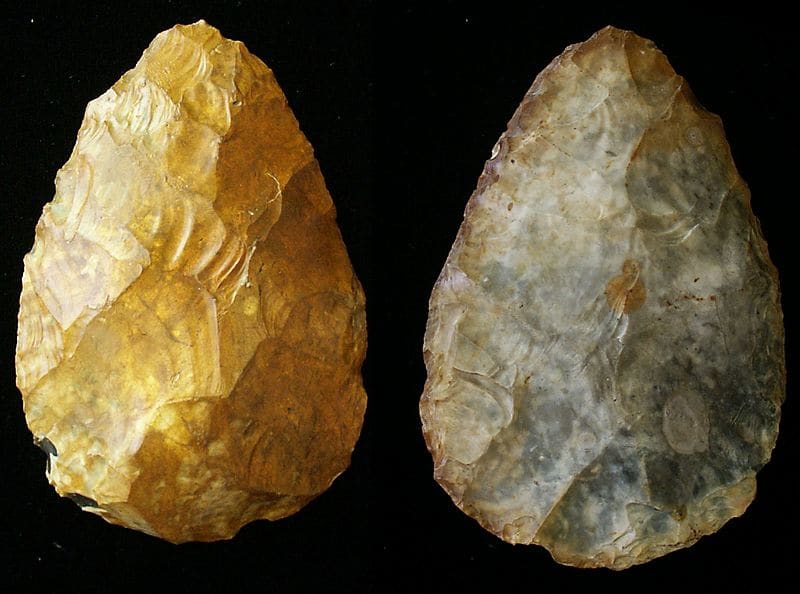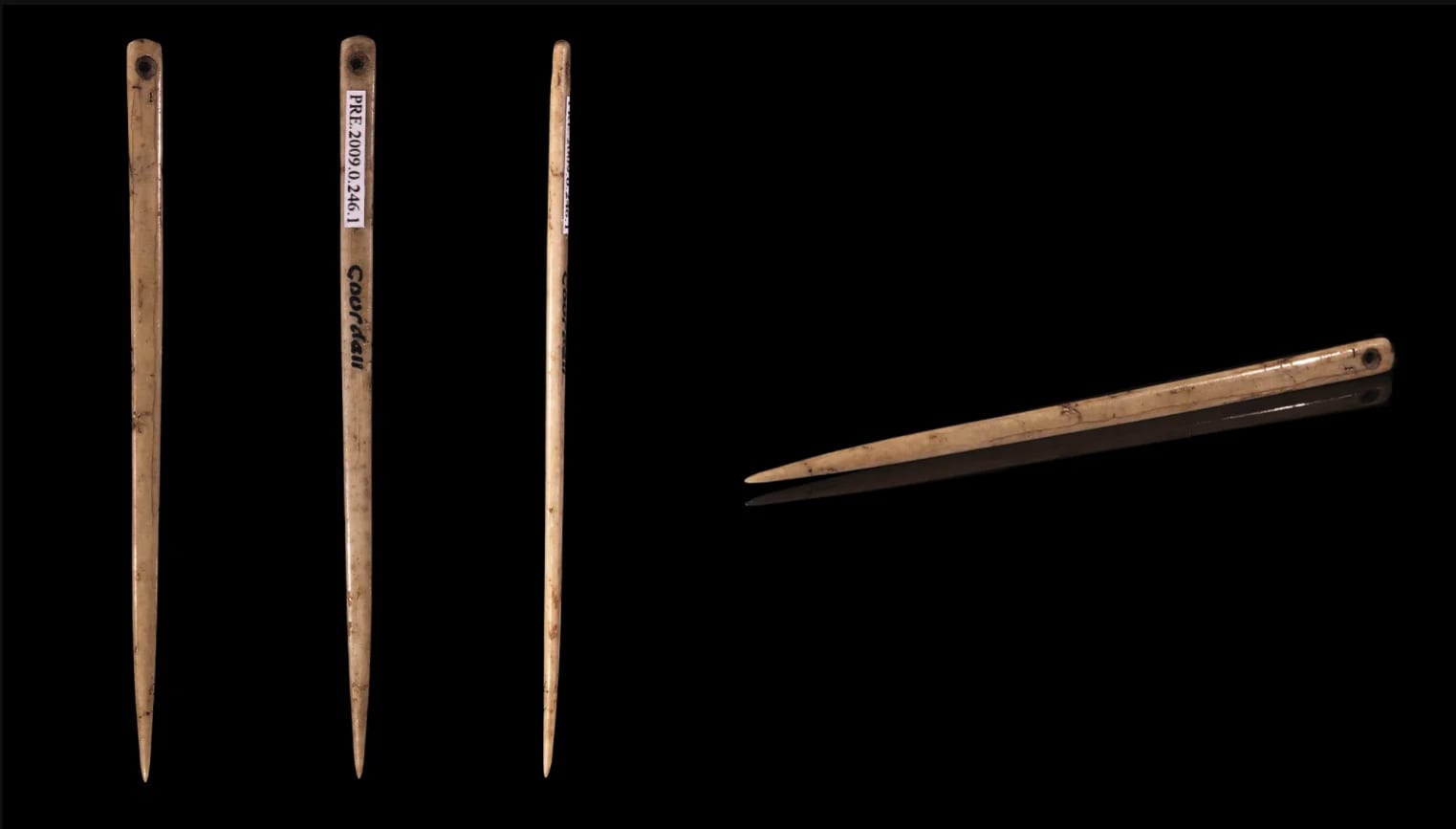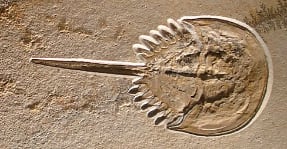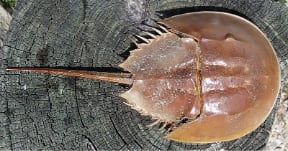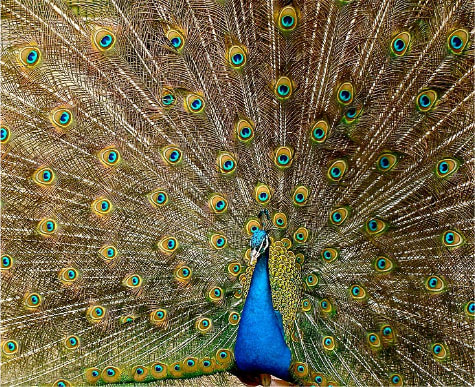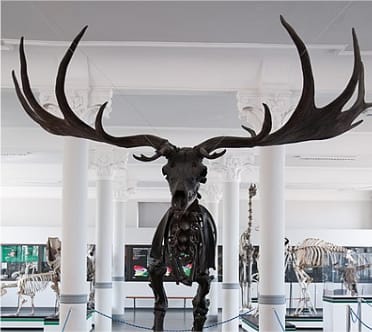Epistemic Status: This post explores the relationship between biological evolution and the evolution of our machines. We examine parallels between the evolutionary pressures shaping organisms and machines. We are still exploring this analogy and our findings are tentative. We hope to explore these relationships further in future posts. Feedback and criticism are very much appreciated.
Introduction
After all then it comes to this, that the difference between the life of a man and that of a machine is one rather of degree than of kind, though differences in kind are not wanting. An animal has more provision for emergency than a machine. The machine is less versatile; its range of action is narrow; its strength and accuracy in its own sphere are superhuman, but it shows badly in a dilemma; sometime when its normal action is disturbed, it will lose its head, and go from bad to worse like a lunatic in a rain frenzy: but here, again, we are met by the same consideration as before, namely, that the machines are still in their infancy; they are mere skeletons without muscles and flesh.
— “Erewhon” by Samuel Butler, 1872
Machines change over time. They evolve. Our machines of today are advancements and refinements of the machines of yesterday, with each new generation exposed to selective pressures. Some changes promote the proliferation of some machines over other types and are more likely to persist and undergo further refinement and transformation. Innovations in machine capabilities exploit new niches and proliferate, diversify, and rapidly spread throughout their ecosystem. At the same time, just as with biological evolution, previous generations of machines go extinct, while others persist comfortably in their niche, undergoing only minor changes for hundreds or thousands of years. For example, Samuel Butler pointed to the tobacco pipe, and other pre-machine tools such as hand axes and needles lasted for millenia.
The hand axe is the longest-used tool in human history, employed with little modification for over a million years, and sewing needles that resemble those we use today, made from bone, have been dated to over 60 millenia ago.
A 450 million-year-old fossil of a horseshoe crab beside a modern specimen. This basic design has persisted for nearly half a billion years.
Similar processes of change over time occur in biological evolution, in particular through the well-documented evolutionary processes of recombination, mutation, and natural selection (among others). Both machines and organisms change over time. They both evolve. The question, however, is how similar are the underlying processes that drive these evolutionary changes over time?
It is to this question that we now turn our attention. We’ll focus on biological evolution from the perspective of individual organisms, and this has its analog in machines as individual objects within the broader scope of technological evolution. We’ll consider a tool as any object or meme that aids or extends human capacity (such as hand axes and needles), and machines as tools that are self-powered (such as cars and computers). Later, we’ll discuss artificial intelligence, which we’ll consider as machines that are self-directed to some extent (such as ChatGPT). As with organisms, machines have populations and generations as well. Machines are constituted from interacting micro parts and exist within macro structures that impose selection pressures. In this post, we explore the utility of applying lessons and insights from biological evolution as a first step to help us understand the processes underlying machine evolution.
When we describe the macro trends of machine evolution casually, we are often describing something more like "trends in machine development and innovation over time."
For example, we might say things like:
- "Wow, it seems the pace of innovation is picking up!"
- "Our machines are definitely becoming more complex over time."
- "There are lots of different types of new machines! "
However, we don't seem to have very good "gears level thinking” or “intuition pumps" about machine evolution, despite this phenomenon driving vast changes in human society and the human condition.
To rectify this, we want to explore the idea that machine evolution is a topic worthy of direct study - particularly to those interested in AI, AI safety, and those who are concerned about the control that humans have already ceded to machines.
But, first, let us first take on definitions of both "machine" and "evolution" and then put them together for our working definition of “machine evolution”.
Grounding the intuition
At the beginning of the twentieth century David Hilbert sought to establish the completeness of mathematics and instead precipitated the realization that the extent of mathematical truth can never be systematically confined. Evolutionists, who appeared to have dislodged mind and intelligence, are discovering that evolution is an intelligent process and intelligence an evolutionary process, rendering the separation less distinct. Technology, hailed as the means of bringing nature under the control of our intelligence, is enabling nature to exercise intelligence over us.
— Darwin Among The Machines: The Evolution Of Global Intelligence by George B. Dyson, 1997
For this exercise, let’s start with the most broadly accepted definition of these two terms. To do this, let us turn to Wikipedia.
Wikipedia defines a machine as:
a physical system using power to apply forces and control movement to perform an action. The term is commonly applied to artificial devices, such as those employing engines or motors, but also to natural biological macromolecules, such as molecular machines. Machines can be driven by animals and people, by natural forces such as wind and water, and by chemical, thermal, or electrical power, and include a system of mechanisms that shape the actuator input to achieve a specific application of output forces and movement. They can also include computers and sensors that monitor performance and plan movement, often called mechanical systems.
Now, let's do the same for evolution:
In biology, evolution is the change in heritable characteristics of biological populations over successive generations. These characteristics are the expressions of genes, which are passed on from parent to offspring during reproduction. Genetic variation tends to exist within any given population as a result of genetic mutation and recombination. Evolution occurs when evolutionary processes such as natural selection (including sexual selection) and genetic drift act on this variation, resulting in certain characteristics becoming more or less common within a population over successive generations. It is this process of evolution that has given rise to biodiversity at every level of biological organization.
Now, there is no Wikipedia page for machine evolution (maybe one piece of evidence supporting the claim that it’s understudied), so we'll have to put the terms together ourselves.
For us, put succinctly, machine evolution is the process by which machines change over successive generations.
Interestingly, there is only a very sad Wikipedia page for the broader phenomenon of technological evolution. It does offer a relatively simple “three stages of technological evolution” which include: (1) tools, then (2) machines, and finally (3) automation. This suggests that the very pathway of technological evolution is aimed at automation. But, as with machine evolution, there's a serious dearth of research on this topic. Here it is worth briefly mentioning why we highlight machine evolution specifically.
First, machine evolution includes the exploration of objects that are more complicated than we might commonly expect of a tool (think of the difference between a hammer or screwdriver and that of a digital computer).
Second, machines are typically “using power to apply forces and control movement to perform an action”. This allows them to engage with their environment in a way that more closely resembles that of an agent rather than a simple tool.
Third, the focus on machines within the broader technological evolution, and humanity’s role in designing machines, is the crucial point in between simple tools and full autonomy, where we can most likely exert significant influence on the evolution of a population of machines.
For us, then, our first goal for understanding Machine Evolution will involve two simple steps: (1) examine macro trends in machine development and machine populations, and (2) explore how the micro processes of biological evolution may provide insights into the process of machine evolution. In this context, we'll explore key biological evolutionary processes such as heritability, reproduction, and recombination among others to describe how and why machines have taken different shapes and types over time. Furthermore, we’ll also explore some key distinctions and highlight the key role of artificial selection as contrasted to the role of natural selection.
Applying the intuition
There are many interesting trends in machine development, but in this article we’ll focus on the following 3 self-evident trends that we think help to illustrate the underlying processes of machine evolution:
- Improvements in machine capabilities
- Increases in the amount of computing machines
- Increasing role of machines in the design and creation of new machines
To explain these changes in machines themselves, we explore 5 biological evolutionary mechanisms that have shaped biological life over time, each of which we develop an analog for machine evolution.
These 5 biological evolutionary mechanisms are:
- Inheritance: the passing on of traits from parents to their offspring; either through asexual reproduction or sexual reproduction, the offspring cells or organisms acquire the genetic information of their parents.
- Reproduction: the biological process by which new individual organisms – "offspring" – are produced from their "parent" or parents.
- Mutation: an alteration in the nucleic acid sequence of the genome of an organism, virus, or extrachromosomal DNA.
- Recombination: is the exchange of genetic material between different organisms which leads to production of offspring with combinations of traits that differ from those found in either parent.
- Natural Selection: the differential survival and reproduction of individuals due to differences in phenotype. Charles Darwin popularized the term "natural selection", contrasting it with artificial selection, which is intentional, whereas natural selection is not.
With biological life, populations change over time through evolutionary pressures placed upon individual organisms. Very roughly, each new organism is created by some method of reproduction, dictated by the organism's genome. In sexual reproduction, an organism inherits traits (along with some random mutations) from its parents after a process of genetic mixing (recombination). The changes in the genome of biological organisms give rise to slightly different organisms, to variations of different phenotypes, from which natural selection picks the winners through organism survival and reproduction rates, provided the environmental conditions remain stable enough to support the prospect of continued adaptability.
As mentioned earlier, evolutionary forces are at play upon machines, as argued by both Samuel Butler and George Dyson. The biological evolutionary processes can also be broadened slightly to consider them as potential evolutionary processes guiding the evolution of machines as well. This analogy seems particularly relevant for intelligent computing machines and the increasing capability of AI to direct the behavior of these machines. In this spirit of analogy, let us briefly recast each of these mechanisms in terms of machine development. We should note that these are tentative and imperfect analogies that we hope to refine over time with further work and feedback.
1. Machine Inheritance: The transfer of design features, characteristics, or programming from one generation of machines to the next.
For example, new generations of desktops, laptops, and smartphones typically retain key design features (screens, speakers, microchips) from previous generations. They inherit these features. Similarly, the structural design of modern airplanes are inherited from the structural design of previous generations, and ultimately from the basic principles of aerodynamics from early aircraft.
2. Machine Reproduction: The process by which new generations of machines are created and replicated.
For example, the mass production of the latest smartphone model in factories worldwide, all from the same template, or the increasing role that other machines and mechanical design play in the reproduction of airplanes, automobiles, and tablets.
3. Machine Mutation: Design changes or innovations that introduce new features or capabilities to a specific machine.
For example, the transition from wired to wireless technology in headphones and the computer mouse, or the deleterious mutation of introducing Clippy, the much maligned “office assistant” in Microsoft programs that was removed from the subsequent generations, rendering Clippy all but extinct. For computing machines, this is often a change in software. Another example is adding multiple camera lenses to smartphones.
4. Machine Recombination: The introduction and synthesis of specific features, designs, or technologies from current machines to create a new machine.
For example, the integration of internet connectivity from computers to televisions, introducing us to smart TVs, or the development of drones, which combine technologies from aviation, robotos, and remote control systems. There’s also the keytar, the famous recombination of a keyboard and a guitar.
5. Artificial Selection: The differential survival and reproduction of successful technological features (due to efficiency, effectiveness, popularity and so on) as expressed in the form of individual machines. It should also be noted that artificial selection can more usefully be thought of as “intentional” or “designed” (which is why the term is used over “natural,” here) when compared to natural selection which is more typically thought of as “blind”.
The evolution of smartphones is instructive here as well. Over the past decades, features that users found most useful, efficient, or popular in smartphones have been retained and improved upon in subsequent generations, while less favorable features have been phased out. For instance, consumers showed a strong preference for touchscreens over physical keypads, leading to the dominance of touchscreen smartphones today. Additionally, features like facial recognition, larger battery capacities, and improved camera technologies have been promoted due to their popularity and effectiveness, shaping the current generation of smartphones.
The evolution of smartphones also points to one additional form of evolution that is of importance to intelligent computing machines and that is the role of software in machine evolution. For example, one might consider the evolution of AI to be just as much about the evolution of software as the evolution of any particular machine, in fact it may even make more sense to think of the evolution of AI as being primarily driven by the evolution of software. This is a point we hope to explore in future posts.
Now that we have our observed trends and we have recast biological evolutionary processes in terms of machine evolutionary processes, let us briefly demonstrate how these evolutionary processes may be used to help explain the observed trends.
- Improvements in machine capabilities: This can be seen as a consequence of “artificial selection” where machines experience “recombination” of various forms and some “mutations” that lead to differential survival and “reproduction” rates.
- Increases in the amount of computing machines: This can be thought of as a particularly successful “recombination” of the design feature of “computation” throughout the “artificial selection” machine ecosystem.
- Increasing role of machines in the design and creation of new machines: At some point, a “machine mutation” led to the involvement of machines in the design and creation of other machines. This was a remarkably successful mutation, and was “inherited” and “recombined” as a result, spreading far and wide through “artificial selection”
Finding deviations
For the comparison between machine and biological evolution to be useful, we need to understand its limitations. Where do the theories align and where do they diverge? Here are three important differences between them:
Technological evolution is externally directed
In biological evolution, natural selection is an emergent phenomenon. Individuals pass an imperfect copy of their DNA to their offspring, marred by replication errors and shoddily repaired damage (a partial copy, in the case of sex). The rare mutations that make a gene more likely to be passed on will spread at the expense of neutral and deleterious mutations.
In contrast, technological changes are guided by design. The new forms experience selection pressures analogous to biological evolution, but technologies don’t reproduce in a way that’s properly analogous to either asexual or sexual reproduction. Rather than Darwin’s descent with modification, we see replication with modification. Changes are introduced and removed deliberately, and the people behind those changes are incentivised to make as much progress as possible as quickly as possible, whereas most species maintain a trade-off of moderate mutation rates to balance the generational adaptability provided by high mutation rates (and the metabolic cost of repairing DNA replication errors) against the advantage of having fewer deleterious mutations in each generation (among other factors).
Genes have to do everything
In biology, genes must fulfill many functions without any long-term plan. The genes themselves encode proteins, but are also the “memory” of the system - if a gene leaves the gene pool, it’s gone unless it’s recreated through mutation again. Each gene must ensure its own replication.
In contrast, there’s a separation of powers in machine evolution. Many minds can work on the same problem, many solutions can be compared in parallel and in advance, all before any physical manifestation must be produced and tested in the wild. Data can be stored remotely, rather than the only copy of a machine’s “genome” being stored inside that machine. There’s creativity and memory: both old forgotten and brand new ideas can be introduced without any predecessor in the previous generation.
This, combined with the first point, means that machine evolution can be much, much faster than biological evolution, and less “wasteful”. We don’t need to try random variations, most of which would ruin the technology. Unlike with natural selection, we can deliberately fiddle with the mechanism of technological evolution, using machines themselves to help us engineer designs, for example. This may even be considered to be somewhat Lamarckian.
Machines don’t have sex
Many species reproduce asexually, but when discussing evolution, we tend to focus on sexual reproduction since this is the most common form for animals and plants. However, sexual reproduction doesn’t have a clear analogue in machine evolution. Sex involves the mixing of two individuals’ genes to produce offspring.
Sex is strange, as it evolved despite heavy costs (for example, half of humanity can’t reproduce, and the other half requires the input of the first half to do so). The advantages of sex are complicated, including factors like variation within a species that doesn’t apply to machines, which tend to be mass-produced in a way more analogous to cloning than sex.
Sex also leads to sexual selection, where traits proliferate when they improve an organism’s ability to attract a mate, often through competition with others of the same sex. This sometimes leads to strange adaptations such as peacocks’ displays, pufferfish sand art, and, some argue, human intelligence. In some cases, such traits even end up reducing the fitness of the species as a whole, such as the insane antlers on male Irish elk, which weighed 40kg and measured 3.65m from tip to tip. These likely evolved as a sexual display, and their burden may have contributed to the species’ extinction.
There’s no exact analogue for this kind of selective pressure, nor its consequences, for machines.
The Evolution of Selection Pressures
In this section we’ll explore the evolution of selection processes, and the transitions from (1) Natural Selection through (2) Artificial Selection to (3) Technological Selection (or Technoselection). We argue that while natural selection continues to play a dominant role in the evolution of biological organisms, that in the case of humans, artificial selection has been added as a new form of evolutionary pressure. Artificial selection, a term we borrow from Charles Darwin, highlights the role that humans and human societies already play in shaping the evolution of humans, our machines, and other human artifacts such as markets and organizations. This evolution of evolutionary selection pressures alongside the trends found in machine evolution suggests a plausible new form of selection pressure on the horizon that we call technoselection. As humans have begun playing a larger role in shaping their own evolutionary pressures, so increasingly intelligent computing machines will begin to play a larger role in shaping their own evolutionary pressures as well. We have seen that human intelligence is a stronger selection process than natural selection. Artificial intelligence, found in advanced computing machines, if it vastly surpasses human intelligence, will be an even stronger selection process than human intelligence.
Natural Selection
In biological evolution, with all species of flora and fauna, there are always two major macro-incentives at work: survival and reproduction. The natural processes for succeeding or failing in survival and reproduction – natural and sexual selection – are both blind and slow. In other words, if natural environmental conditions change, sometimes drastically, then species that are unable to adapt accordingly face being naturally selected for extinction.
It is important to note that, within an entire population of species, there will always be emerging genetic mutations. Far more likely than not, mutations are harmful to an organism i.e. maladjusted. However, on occasion, mutations can prove to be beneficial and allow for greater fitness within an environmental niche. For example, giraffes didn’t simply want to eat leaves higher on trees and so stretched their necks more and more and passed along this desire to their offspring’s genotypes. (Although epigenetics may have some causal influence over acetylation and methylation of genes, this is not a driving factor in this example.)
This was the pre-Darwinian belief of Jean-Baptiste Lamarck. But Charles Darwin, and the later contributors of the New Synthesis of evolutionary theory, proposed a much more elegant and cogent account of natural behaviour. Instead of a Lamarckian account, they proposed that those giraffes with mutated genes gifting them with the phenotypic traits of slightly longer necks, tended to reach the higher leaves better, and hence, survived more healthy and longer, thereby giving them greater mating opportunities which, in turn, passed along those longer-neck mutations throughout a population. Should, over time, the environment change again – for example, only leaves on the lowest branches of trees survived - then we might see a gene shift in population phenotypic characteristics over time producing shorter-necked giraffes. But this will take quite a few generations to reach a new balancing selection. In this way, evolution, through natural and sexual selection, is both blind and slow. That is, if environmental conditions change drastically, those lucky few mutants that have slightly better-fitting phenotypic traits will stand a better chance for being selected to survive than the rest of the population.
Historically, there was a different form of evolutionary battle going on between Charles Darwin and Jean-Baptiste Lamarck. The battle was one of evolutionary epistemology – that is, a battle between the survival of competing ideas or knowledge that would be selected for its cogency and soundness amongst the scientific communities. Lamarck’s theory of ‘Inheritance of Acquired Traits’ proposed that the traits a set of parents learned while surviving would somehow be transferred onto their progeny or offspring after reproduction (see giraffe example, above). In other words, Lamarck incorrectly believed that a set of parents’ learned self-improvements could somehow be passed onto their offspring. Although this theory falsely characterizes human evolution, and was not selected for continued existence/acceptance of the scientific communities, it may turn out to be the basic model for machine evolution. For the transmission of information – and behaviour – would follow quite systematically with machines. In other words, manufacturers use a model involving a Lamarckian model proposing ‘the inheritance of acquired characters’.
Manufacturers of machines build on what they already have – a substrate. They don’t reinvent the wheel – they improve upon it according to consumer and financial pressures. Hence, machine evolution follows Lamarckian principles which do not apply to human evolution. But just as the Ptolemaic geocentric astronomical system was replaced by the heliocentric version of Copernicus, Galileo, Brahe, and Newton, it can still be used by seafarers to correctly guide them while at sea. Perhaps Lamarck shall have his day after all with artificial life.
Artificial Selection
About 6 million years ago, humans descended with modification and split from a common ancestor with the chimpanzee, then to Australopithecines, then to the various Homo species, and finally to sapiens. Now, although humans, like every other form of flora and fauna on the planet, must compete for sex and survival, our evolutionary history is quite unique because somewhere along the way, throughout the span of 6 million years of descent with modification, we developed consciousness and sophisticated languages which allowed us to actively direct our behaviour and gain greater control over our environments. Rather than blindly responding to environmental pressures purely in accordance with hard-wired instincts, consciousness allowed our species the capacity to reflectively devise options and alternatives to varying environmental pressures. As a result, our species developed rich and varied cultures which capitalized on novel ideas and materials manipulation in an effort to improve our lives and increase the likelihood of surviving and reproducing. In this way, we moved, epistemically, from reacting blindly to environmental pressures, to acting reflectively. For the first time in our evolutionary past, we had developed the capacity to understand gaps in our explanatory schemas. And then we could take action by filling in those gaps with directed and novel ideas.
As such, within each culture, many artifacts were invented, developed, and refined; from hand axes, to the controlled use of fire, to the development of the wheel, to germ theory, and nuclear fusion. The so-called ‘cultural explosion’ of the Upper or Late Pleistocene about 30,000 years ago ushered in enormous developments in tools, cooking methods, weaponry, housing, clothing, and just about every other manner of self-improvement. These artifacts – or memes, as Dawkins calls them – have continued to develop as humans continue to culturally evolve.
After the advent of agriculture about 10,000 years ago, the world has never been the same. Knowing where your next meal is coming from freed up a lot of time for our ancestors to become adept at various tasks which later became occupations. Humans have become increasingly specialized in tasks ever since. Once particular flora and fauna became domesticated, it didn’t take long to begin breeding techniques using artificial selection to attain particular desired qualities in plants and animals. Just look at the current size of bananas or corn from their much smaller progenitors.
Or consider our pet dogs; no matter how large, or how small, how cute, or how friendly, each of these owes its ancestry to the common grey wolf. In case you’re wondering why a Corgi looks like it does, or a Chow, or a Great Dane, Chihuahua, or your basic mutt, it’s because some ancestors thought it was a good idea to mate dogs with some desirable qualities with other dogs possessing other desirable qualities.
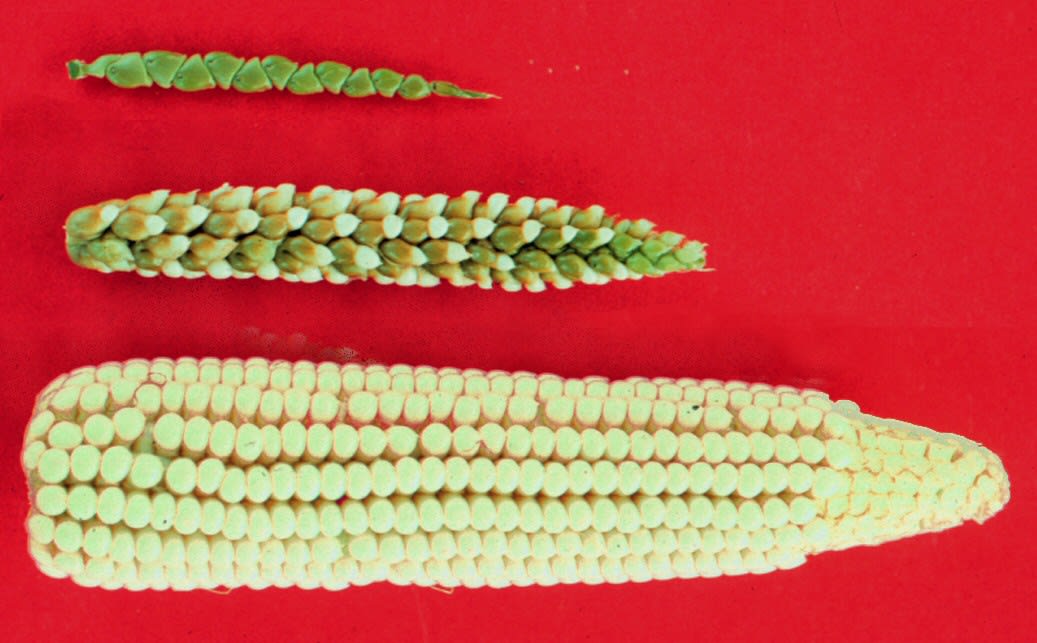
Ears of non-domesticated teosinte (above) and its domesticated variant, corn (below), selectively bred for human cultivation over ~10,000 years.
So now, for the first time in our existence, we were in control of phenotypic traits that were desired for some specific reason or other. For animal domestication and husbandry, dogs were bred so that their phenotypic traits would assist in hunting (Dachshund) or transportation (Huskie), or purely aesthetics (Pug).
Human-directed artificial selection has extended into the area of machine evolution as well. For millennia, humans have been tinkering, adjusting, and modifying machines to become more and more useful and beneficial to humankind. If we just look at the development of the television for example, we see many different ways in which the efficiency of such a device has been improved upon from analog to digital, from fuzzy screens to high-definition, from clunky and small to flat screen and huge, to prohibitively expensive to affordable, etc. The delivery service for such devices has also been vastly improved; from rabbit ears in the 50s and 60s, to antennas, to cable, to satellite, there has been a relatively steady increase in the development and improvement of the television since its inception. The same can be said for other types of machines as well – cars, planes, trains, appliances, etc. And of course, the exact same parallel can be drawn when talking about the evolution of machines like computers and robots.
We have seen significant improvements in both fields from the earliest times to now. And this trajectory will continue until we reach a critical point at which machines will be capable of making their own modifications for subsequent generations.
Technoselection
Artificial selection (as far as we know) is unique to humans. We are the first species to recognize and use our own artifacts to take some degree of control over the selective pressures on our species. Will machines go through the same phase transition in their evolutionary pressures? Will they wrest control over their evolution as we did? Currently, artificial narrow intelligence (ANI) acts much like our Australopithecine ancestors – blindly and according to specific constraints. But just as we created artifacts to alter the direction of our own evolution, there may be a similar shift in machine evolution as we approach artificial general intelligence (AGI).
Technoselection is the term we give for the next evolution of evolutionary pressures. Roughly put, natural selection relies on slow, blind, natural processes; artificial selection additionally relies on the creation of artifacts by humans that shape our evolutionary process and that of our machines with intentional design; technoselection pressures arise as our technology increasingly plays a large role in shaping its evolutionary pressures. With technoselection, machines themselves play more and more significant roles in their own design and development. It seems to us that this evolutionary process may arise from AGI development (1) through increased ability to autonomously create new and useful technological objects and/or (2) through machines that develop a form of machine sentience, consciousness, or general self awareness.
There are divided camps concerning whether or not machines will be able to comprehend their own existence and, as such, reflectively modify themselves or other machines in accordance to their emerging value systems. At this point in time, the evolution of such machines suggests a potential path towards self-awareness or apperception. And should this occur, it will raise a number of pressing questions, not the least of which is: How will we know? What Turing Test will exist to make such determinations? What theory of mind will allow us to see into the black box of a techno-brain to know, even if only analogously, that they are becoming more like us? But it is at this point that we need to ask another very important question:
Why should a machine’s emergent consciousness be similar to ours?
We are carbon-based; they are silicon-based. Airplanes don’t flap their wings to fly like birds; this would be incredibly inefficient. And yet they fly. They fly faster, higher, and better than any birds ever could or will. For those who eschew the idea of machines developing human-like qualities, such as consciousness or sentience, is this not simply the anthropocentric emergence of a new form of logical bias and discrimination – an ad machina attack? At this point in time, we have little idea what it might be like for an AI machine to be conscious or sentient.
Further, more deeply pressing questions are going to need to be answered; and perhaps, sooner than later. For example, does such an ontological shift in technoselection mean that such machines have attained personhood status? And, as such, should they be afforded rights? Even though sexual reproduction would not be a driving factor for such machines, perhaps replication and modification would be. And whether or not such machines attain a level of consciousness, how much autonomy should be afforded such machines in the future modification of their systems? How much will and should we be able to control or contain such features of modification and self-improvement? If the macro programs of machine learning are survival and optimal functionality, how might this play out in projected scenarios involving greater and greater capacities for self-improvement – whether consciously attained or not? For technoselection can still occur whether the machines are consciously aware of their environments or not. Blind technoselection can also be as productive or destructive, controlled or uncontrolled, as reflective technoselection. Should technoselection emerge, are we prepared for it? Have we sufficiently anticipated and answered the questions above? Given the current states of both technical AI safety and AI Governance, the answer is clearly no.
Conclusion: Machine Evolution & Human Control
Samuel Butler died in 1902. The mechanical kingdom continued to proliferate, spawning a cascade of new species while others, such as steam engines, became extinct. With the advent of electronic digital computers the sense of anticipation – and interest in Butler’s prophecies – was renewed. These machines showed signs of intelligence, and intelligence is a sign of life, even skeptics have agreed. But to ascribe a living intelligence to computers confuses causes with symptoms and was soon shown to be premature.
Computers may turn out to be less important as an end product of technological evolution and more important as catalysts facilitating evolutionary processes through the incubation and propagation of self replicating filaments of code…..
The origins of life as we know it – and life as we are creating it – are to be found in the cross-fertilization between self-sustaining metabolism and self replicating code. The coalescence of the kingdom of numbers with the kingdom of machines has been incubating for over three hundred years.
— Darwin Among The Machines: The Evolution Of Global Intelligence by George B. Dyson, 1997
This post is the beginning of Part III of the running sequence exploring how humanity lost control and humans lost liberty. It is in Part III that we explore some of the most important objects and structures that shape our current moment in the new age of AI darkness. This chapter has provided an initial exploration of how machines are evolving and the underlying processes that drive these processes.
We noted easily observable general trends in machine evolution which include (1) an increase in machine capabilities, (2) increases in computing machines, and (3) an increase in the role of machines in creating new machines. We then turned to a brief description of 5 core tools of biological evolution (not meant to be exhaustive but simply exploratory) including: (1) heritability, (2) reproduction, (3) mutation, (4) recombination, and (5) natural selection. From here, these processes of biological evolution were given machine analogs to machine evolution. We describe the concepts of machine inheritance, machine reproduction, machine mutation, and machine recombination. While we found this simple renaming appealing for these processes, we decided that natural selection needed a different treatment. For an analogy to natural selection we have chosen the term artificial selection which is driven in large part by human culture, human artifacts, and individual humans. We prefer artificial selection to “machine selection” or something like that because it hews closely to the distinction that Charles Darwin made and to make clear the continued role of humans (and our artifacts) in this process. Artificial selection also highlights the ways in which this selection pressure applies more generally to human artifacts. Human intention and human design have shifted the pace of evolution of artifacts, including machines, rocketing forward by comparison to biological evolution. However, the evolution of evolutionary selection processes does not end with artificial selection. We see an increasing role of machines in processes such as machine design, machine reproduction, machine recombination, and artificial selection. Taken together these trends suggest the eventual appearance of a new form of evolutionary pressure that we call technoselection. In a world of technoselection, machines themselves will play a more direct role in shaping their own evolution, similar to the way in which humans have used artificial selection to shape their own evolution.
New generations of digital computing machines, for example, inherit mutated and recombined forms of hardware and software from previous generations. It is then through artificial selection, through human-aided differential rates of reproduction and survival rates from which the winning machines flourish and the losing machines go extinct. It is typically through competition and cooperation that both specific organisms and specific machines survive, reproduce, and evolve to adapt to their environment, lest selection leave them behind.
The analogy, however, is a work in progress. For this post, we identified three initial examples of the limitations of our analogy. There are of course others, but we believe these three examples draw attention to important distinctions that we would like to explore further. The first identified limitation is the absence of a clear analogue for sexual selection in machine evolutionary forces. Further, randomness or at least quasi-randomness play large roles in shaping evolution. This is less true for machine evolution which is much more a product of directed human, and more recently, machine-aided human design. That is, while biological organisms evolved, slowly, with small genetic mutations and recombinations being favored by natural selection over time, entirely new and completely modified machines are designed, built, and deployed deliberately by humans as a result of a myriad of factors in both their own nature and their environment.
It is this point of deviation from the randomness of biological evolution to the deliberateness of modification of machine evolution that we would like to linger upon in closing. In a broad sense, the whole endeavor of human technology has been to assist humans in wresting some control away from nature and making it their own. This process has begun to shift evolutionary processes away from natural selection and towards artificial selection.
Machine evolution is already a phenomenon that is not random but rather deliberate and directed by humans. And, as we have discussed earlier, machines themselves are beginning to play larger roles both in the reproduction of other machines and in designing and creating new machines. This trend suggests to us that technoselection, a point at which machines, at least in part, direct their own evolution, is likely near. And this trend makes clear the importance of keeping humans in the loop as the selection pressures evolve in this direction.
One can see humanity’s control of its machines slipping away, one generation of intelligent computing machines at a time.
Additional Reading & Next Steps
While there is not much work in this direction, there are a few specific works in this direction that you may find interesting and that we have drawn from in researching and developing this post. These include
- Samuel Butler (1872) "The Book of the Machines";
- Kevin Kelly (1995) "Out of Control";
- George Dyson (1997) "Darwin Among the Machines";
- Dan Hendrycks (2023) "Natural Selection Favors AIs Over Humans";
- Justin Bullock’s earlier post in this sequence “Welcome to Analogia!”
- Justin Bullock and colleagues (2023) "Introduction to The Oxford Handbook of AI Governance."
As noted throughout, we hope to explore the idea of applying the general logic of biological evolution to other phenomena and objects as well. The evolution of organizations is the next topic in this sequence, and we also hope to further explore other topics such as technological evolution, software evolution, and AI evolution to better understand how the risks of AI and technological development can be examined with these lenses.
**This post was developed by the Convergence Analysis team with the authors Justin Bullock, Christopher DiCarlo, and Elliot Mckernon each contributing substantively and substantially to the argument. We received multiple rounds of detailed feedback from David Kristofferson for which we are grateful. We appreciate the opportunity to explore these concepts as we seek to better understand the evolution of Artificial Intelligence and intelligent computing machines. We believe a deeper understanding of these topics will help us to better understand pathways to mitigating AI risks.**
